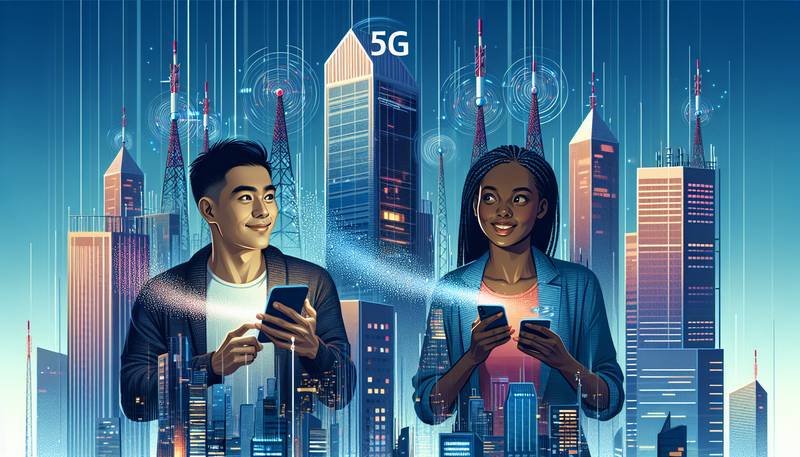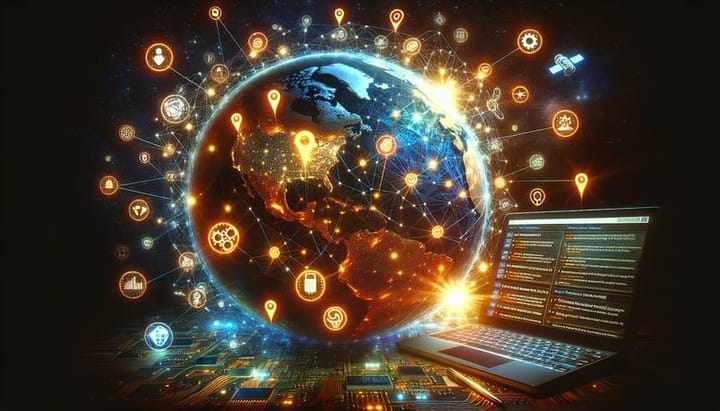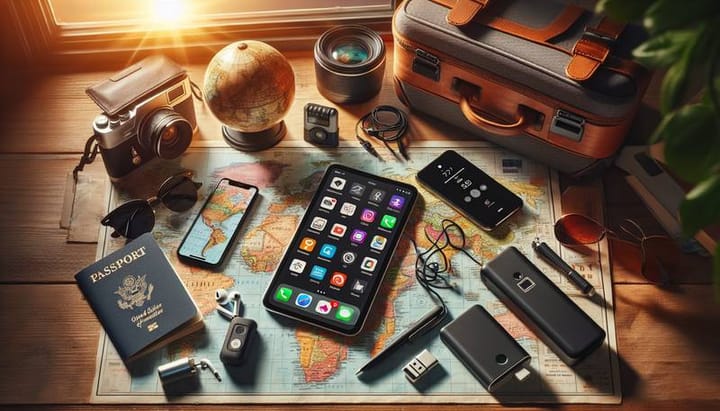The Impact of 5G: What You Need to Know

Welcome to the forefront of technological advancement where the fifth-generation technology standard for broadband cellular networks, known as 5G, is set to revolutionize the way we live, work, and play. In an age where instant connectivity and high-speed internet are no longer luxuries but necessities, 5G comes as a beacon of progress that promises to enhance every aspect of our digital lives. From downloading entire movies in seconds to enabling autonomous vehicles, 5G is the technological leap we've been waiting for. In this comprehensive guide, we will journey through the ins and outs of 5G technology, its capabilities, and the profound impact it is destined to have on society. With a blend of informative insights and entertaining facts, let's unravel the enigma that is 5G - a small label for a giant leap in connectivity.
The Basics of 5G
5G stands for "fifth generation," the latest evolution of mobile wireless technology. It succeeds 4G (LTE/WiMax), 3G (UMTS) and 2G (GSM) systems, bringing with it unprecedented improvements in speed, capacity, and latency. At its core, 5G utilizes higher radio frequencies, which have a shorter range but higher capacity than the lower frequencies used by previous cellular networks. These high-band frequencies, known as millimeter waves, can transmit large amounts of data over short distances at speeds previously unseen. Apart from millimeter waves, 5G also utilizes mid-band and low-band frequencies to ensure wider coverage. 5G networks also employ new technologies such as beamforming — a way to direct signals precisely where they are needed, and Massive MIMO — which uses numerous antenna arrays to improve signal strength and efficiency. This perfect symphony between technology and spectrum is what makes 5G the hero in the narrative of next-gen connectivity.
Blazing Fast Speeds
When we say that 5G is fast, we mean that it's "blink-and-you-miss-it" fast. The potential of 5G is to reach speeds up to 20 Gbps (gigabits per second), whereas the peak speed of 4G is only 1 Gbps. In simpler terms, if we consider downloading a 2-hour HD movie, 4G might take around 10 minutes to complete the task, whereas 5G could do it in mere seconds. This quantum leap in speed is not just about downloading content faster. It's about seamless streaming in ultra-high-definition, virtual reality experiences without a hiccup, and real-time data sharing which will be crucial for developments in telemedicine and remote surgery. The fast bandwidth will eliminate buffering, making your 'video freezing' during a crucial gaming moment or business video call a thing of the past. It's the cornerstone of 5G that sets the foundation for a plethora of futuristic applications and services, changing how we interact with digital content or data transfer.
Connectivity on the Go
With 5G, 'everywhere connectivity' is not just a buzzword but a tangible reality. The technology is designed to provide a more stable and reliable connection in crowded places or while on the move — think connected cars navigating without a hitch through city streets, or live-streaming a music festival with a crystal-clear image and zero latency. It's all about high-speed data transmission seamlessly maintained from trains traveling at high speeds, bustling city centers, to rural areas that once struggled for a single steady bar of coverage. These improvements do not just enhance personal connectivity but are pivotal for the expansion of IoT (Internet of Things), whereby countless devices — from refrigerators to street lights — are interconnected and require a stable and efficient network to communicate effectively. The vision of a truly connected world, irrespective of your location, is what 5G seeks to fulfill.
The Internet of Things
The Internet of Things (IoT) is all set to ride the 5G wave, transforming our environments with an ecosystem of interconnected gadgets. 5G's low latency and massive device connectivity allow IoT to thrive, with everything from kitchen appliances to industrial machines being able to communicate simultaneously and intelligently. Imagine a smart city where traffic flows are optimized in real-time, reducing congestion and pollution; a healthcare system where patient monitoring devices alert doctors instantaneously to emergencies; a home where your coffee brews just as you wake up, your thermostat adjusts itself, and your car communicates with your schedule to drive itself to your door. The potential is vast and the applications limitless. IoT powered by 5G will enhance automation, improve safety, conserve resources, and much more, creating smarter, more efficient, and connected living spaces. The transformative impact of IoT, enabled by the robust backbone of 5G, is set to redefine the very fabric of society.
As we continue to delve deeper into the features and impacts of 5G, it becomes evident that we are standing on the brink of a connectivity revolution. 5G's far-reaching influence is poised not only to advance the tech world but also to redefine the everyday experiences of individuals and societies at large. Stay tuned as we explore further the challenges and concerns that accompany this new era of connectivity and the promising future that 5G holds.
Challenges and Concerns
While the promises of 5G technology are vast and exciting, like any major technological roll-out, it comes with its share of challenges and concerns. Deployment of 5G infrastructure requires significant investment and time. Telecom operators are facing the immense cost of updating their existing networks and setting up new towers to support the high-band frequencies that 5G requires. On another front, the conversation around health and safety has also been a topic of debate, with some raising concerns about the effects of higher radiofrequency radiation. It is important to note that according to the World Health Organization and other regulatory authorities, there is no evidence to confirm these fears when guidelines are followed.Another concern is the digital divide it might widen - while some areas can barely get 4G coverage, others are stepping into the 5G era, potentially deepening the gap between the tech-savvy and those without access to the latest technology. Security is also a critical concern, as the increased number of connected devices also expands the potential for cyber threats. Industry experts and regulators are actively working on these issues to ensure that 5G technology is not only fast and efficient but also safe, secure, and equitable for all.
The Future of 5G
The future with 5G is not just bright; it's blazing at gigabit speeds. Beyond 2021, as 5G technology becomes more widespread, we can expect a continuous stream of new applications and services that harness its power. We are likely to see more advanced use of augmented and virtual reality in education, allowing students to immerse themselves in a learning environment like never before. Telemedicine can evolve with the potential for remote surgeries becoming standard practice. Smart cities could become the norm with IoT leading to more efficient use of resources and services.The industrial sector is set to benefit greatly from 5G with the advent of Industry 4.0, where factories become smarter and more adaptable to changes in production needs. Real-time communication between machines will enable predictive maintenance, reducing downtime and increasing efficiency. Autonomous vehicles, when combined with 5G, will become safer and more reliable, communicating with each other to prevent accidents and manage traffic effectively.Furthermore, there's the exciting prospect of edge computing – where data is processed closer to its source rather than being sent to a distant data center. This can lead to even faster processing speeds and response times, unleashing the full potential of 5G networks in applications requiring real-time analytics. The wave of innovation that 5G brings is set to crash over us, transforming our world in ways we've yet to imagine.
In conclusion, 5G technology stands as a towering milestone in the landscape of wireless communication, set to fundamentally transform not just technology, but how we engage with the world around us. Its low latency, high speed, and unparalleled connectivity promise a future of limitless potential, unlocking avenues for innovation in every sector from education, healthcare, to urban development and entertainment. While it may bring challenges and concerns that need to be addressed maturely and effectively, the benefits of 5G will undoubtedly reshape our digital future.
As we embark on this journey into the era of 5G, it is imperative that we harness this force for good, with a mindful approach toward inclusion, security, and sustainability. The impact of 5G is a testament to human ingenuity and a beacon that lights the way towards a smart, connected world. With so much to look forward to, it is an exciting time to be alive and connected. Stay tuned to our tech blog for more in-depth discussions, evaluations, and the continuous evolution of the transformative world of 5G.


